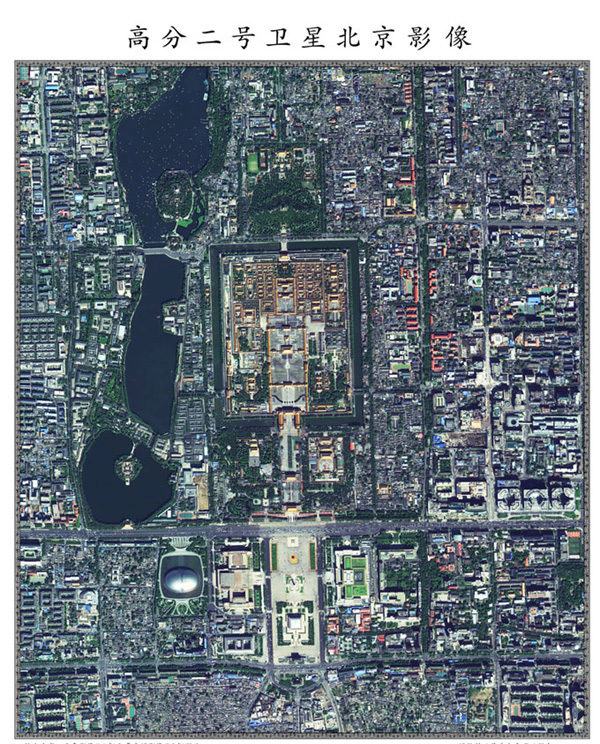 |
|
The image captured by Gaofen-2 shows the central axis of Beijing. [Photo: sastind.gov.cn] |
The images were shot by the Gaofen-2 satellite between Aug 21 and Monday. They show parts of cities such as Beijing, Shanghai and Harbin, as well as famous sites abroad including the Burj Khalifa, the world's tallest building, in Dubai, United Arab Emirates.
There are also images of temporary settlements in Ludian, Yunnan province, the epicenter of a 6.5-magnitude earthquake that struck in August.
Gaofen-2, which was launched at the Taiyuan Satellite Launch Center in Shanxi province on Aug 19, can distinguish a 1-meter-long object and photograph it in full color from 600 kilometers above the Earth, according to the China National Space Administration.
"It is China's most advanced high-definition Earth observation satellite for civilian purposes," Xu Dazhe, the administration's director, said in Beijing.
"The country will accelerate the development of other high-definition Earth observation satellites that will form a network before 2020.
"We are working with the China Aerospace Science and Technology Corp and Chinese Academy of Sciences on the development of Gaofen-3, a round-the-clock, all-weather, radar-based Earth observation satellite."
Xu said Gaofen-4 and Gaofen-5, which will have higher resolution imaging equipment than the existing satellites, are also under development.
"We plan to send these three satellites into orbit in 2015 and 2016, while speeding up research on Gaofen-6 and Gaofen-7," he said.
China initiated the Gaofen program in May 2010 and listed it as one of the nation's 16 most important science and technology projects.
The first satellite, Gaofen-1, was launched from the Jiuquan Satellite Launch Center in Gansu province in April last year.
Wu Yanhua, the administration's deputy director, said Gaofen-2's instrument settings are currently being optimized, a task that is due to be completed by November.
Its systems and equipment will then be tested, and it is expected to become fully operational by next February.
More than 20 government departments and industries will use images provided by Gaofen-2. The satellite will carry out land monitoring and mineral, urban management and disaster prevention surveys in conjunction with Gaofen-1.
Gao Ping, deputy head of international collaboration at the Ministry of Land and Resources, said: "With the Gaofen satellites entering service, we have gained reliable access to high-quality, high-definition images and have commenced trial application projects in eight provinces."
The images will also be used during relief operations and for environmental protection and agricultural planning purposes.
